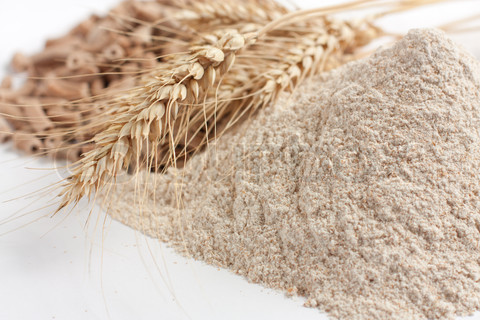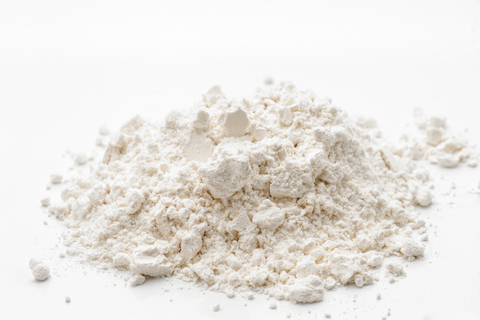
- White enriched flour might be tasty in breads, cookies and pastries but it does not provide the benefits of whole wheat flour. White flour is enriched with some of the nutrients lost in processing, but parts of the whole grain are still missing. The 2010 U.S. Dietary Guidelines recommend that at least half of your daily grain intake come from whole grains. Foods made with whole wheat flour can help you meet that requirement.

Processing
- Whole wheat grains are composed of the outer bran layer, the inner core called the endosperm, and the germ. These three components contribute to the nutritional value of whole wheat flour because all three are retained in the final product. White enriched flour starts out the same as whole wheat flour, but the bran and the germ are removed during milling, leaving the light white endosperm. Manufacturers then enrich white flour with some B vitamins and iron. According to the FDA, each pound of white flour must be enriched to include 2.9 milligrams of thiamin, 1.8 milligrams of riboflavin, 24 milligrams of niacin, 0.7 milligrams of folic acid and 20 milligrams of iron. Seventy-five percent of the phytochemicals in the grain also are removed in the making white flour. Phytochemicals are found in plants and may help to protect against cancer, cardiovascular disease and type-2 diabetes.
Wheat Germ
- The wheat germ is the part of the whole wheat kernel that is the embryo of the seed. This is where the seed will sprout when planted; the germ contains all the nutrients necessary for it to grow. Wheat germ contains B vitamins, phytochemicals and antioxidants such as vitamin E. These healthy antioxidant oils are removed when making white flour to give it a longer shelf life.
Bran
- The bran is the hard outer layer of the whole wheat grain that contains dietary fiber, antioxidants, B vitamins, and phytochemicals. This layer also contains most of the minerals in grain, such as iron, copper, zinc and magnesium. Enriched flour is missing copper, zinc and magnesium and all the fiber of whole wheat flour. Dietary fiber helps regulate your bowels by increasing bulk in your intestines and improving mobility. Bran is an important fiber to maintain a healthy gastrointestinal tract. High-fiber diets help you feel full, and may contribute to a healthy weight loss if you are dieting.
Endosperm
- The endosperm is the middle of the whole wheat grain, and the largest part of the kernel. It is made up of carbohydrates and protein, with small amounts of B vitamins and minerals. About 50 to 75 percent of the endosperm is starch. This is the part of the grain that becomes enriched white flour. It provides baked goods with a mild flavor and smooth texture.
Cautions
- Some people have allergies to wheat products and should avoid whole wheat flour as well as enriched white flour. Talk with your health professional if you have any concerns.
Source: Taylor,Deila, “Health Benefits Between Enriched Flour and Whole Wheat Flour”, Demand Media, http://healthyeating.sfgate.com/health-benefits-between-enriched-flour-whole-wheat-flour-4321.html
